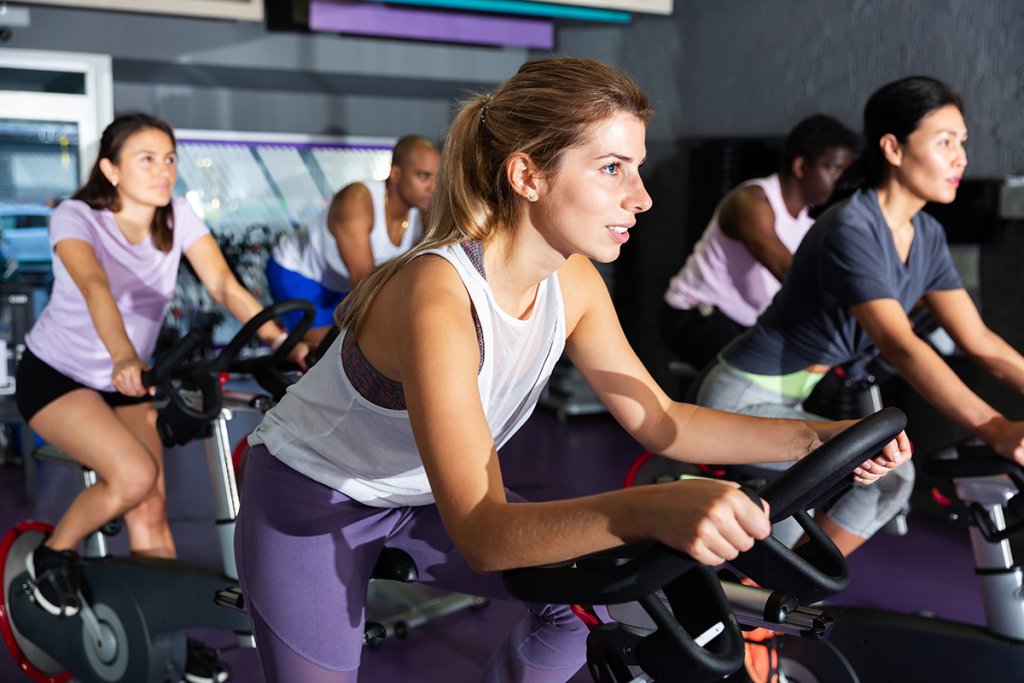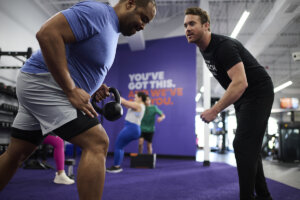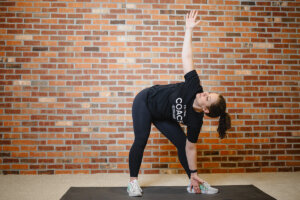Ready to add the bike to your gym routine? We planned a 25-minute HIIT cycling workout to get you started. First, let’s cover the basics.
Whether you’re looking to change up your cardio routine, recovering from an injury, or just getting back into the gym, biking is an effective workout. You can use indoor exercise bikes as a warm-up or cooldown, or for a full workout that increases cardiovascular endurance, improves joint mobility, and strengthens your core and lower body muscles.
What is HIIT training?
HIIT stands for high-intensity interval training. HIIT workouts are primarily based on aerobic exercises and consist of short periods of intense work paired with brief recovery periods.
Reasons we love HIIT workouts
You can try lots of strenuous exercise routines, but you’d be hard-pressed to find anything as efficient as HIIT. And the health benefits are just as intense.
1. HIIT is time-efficient.
HIIT workouts are perfect for when you’re in a time crunch because they can help you achieve similar results to traditional workouts in a shorter amount of time.
2. HIIT training can improve your cardiovascular health.
HIIT workouts aren’t just great for when you’re in a time crunch — they may also help improve your heart health. A 2021 study indicated that regular low-volume HIIT workouts can lead to improved cardiorespiratory fitness, blood pressure, and even blood glucose levels.
3. HIIT leaves a post-workout burn.
The benefits of high-intensity interval training don’t end when your workout does. HIIT has been found to increase post-exercise resting energy expenditure, meaning your body continues to burn calories at a relatively high rate after working out. Plus, HIIT may even increase oxidative metabolism, which helps your body use oxygen to convert carbohydrates into energy.
4. HIIT can increase your oxygen intake.
HIIT may also increase your VO2 max, which is the amount of oxygen your body is able to utilize during maximal effort. The better your VO2 max, the better you perform — and the better the health benefits, like improved strength and stamina.
HIIT cycling workout tips
Before you hop on the bike, there are a few things you need to know to have a safe and effective workout.
Safety first: Make sure your feet are securely strapped into the pedals of your bike and use the handlebars to support yourself throughout the ride.
Second: Remember that effort is more important than speed. When you’re pedaling at high resistance — which can be adjusted using a handle in front of you on the bike — it should feel like you’re climbing up a steep mountain. Upping resistance helps you build cardiovascular endurance and lower-body strength.
Which bike is best for HIIT workouts?
You’ll find several different kinds of exercise bikes in the gym. You can use any type to do a HIIT cycling workout — it just depends on your preferences. Here are some of the most common types:
Stationary bike
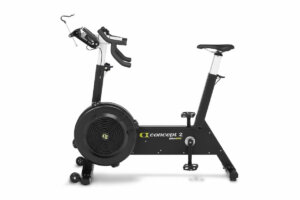
Stationary bikes strengthen your quads, glutes, hamstrings, and calves — and the risk of injury is lower than most other bikes.
Recumbent bike
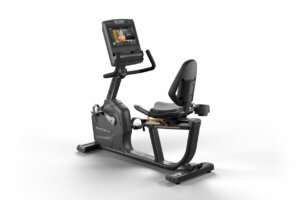
Recumbent bikes have many of the same attributes as stationary bikes, but recumbent bikes offer more stability, so they’re a great option if you need extra help with balance.
Spin bike
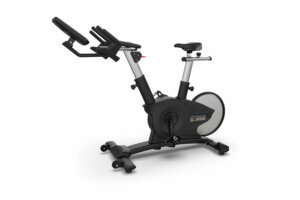
One of the best things about the spin bike is that you can move around more and stand up, leading to a bigger calorie burn. Plus, the flywheel on a spin bike makes it the smoothest — and perhaps the most pleasant — ride compared to other bikes.
Heart rate training how-to
This HIIT cycling workout uses heart rate zones to guide the intensity of work. This basic guide will help you get started:
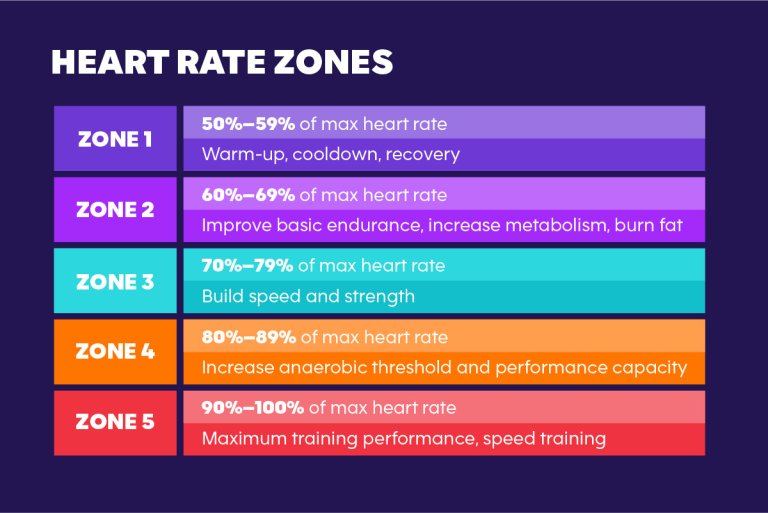
Your heart rate can be divided into five zones based on your maximum heart rate, which you can calculate by subtracting your age from 220. For example, the estimated maximum heart rate for a 40-year-old would be 180 beats per minute (220 – 40 years = 180 bpm).
Each heart rate zone corresponds to a percentage of your maximum heart rate. For example, when you’re performing intense exercise (Zones 3 and 4), you’re using 70%–89% of your maximum heart rate.
25-Minute HIIT training bike workout
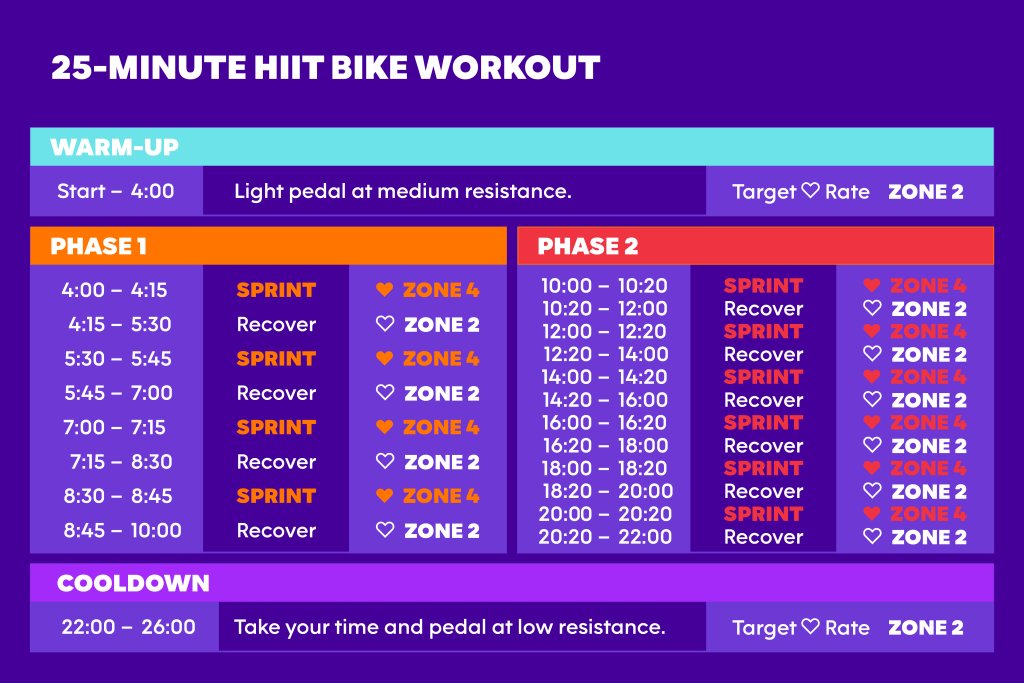
Cycling warm-up
The first 4 minutes of this HIIT cycling workout serve as the warmup. During the warm-up, your heart rate will likely start in Zone 1. Warm up by pedaling at a steady pace for 4 minutes, keeping your heart rate in Zone 2.
HIIT Cycling – Phase 1
The first cycling block lasts 6 minutes and consists of 4 complete rounds of work. Here’s the breakdown:
- Do a 15-second sprint at full effort, with your heart rate in Zone 4 or 5.
- Recover by pedaling at a low resistance for 1 minute and 15 seconds. Your heart rate should be in Zone 2 or 3 during recovery. Take it easy during this phase to allow your heart rate to come back down.
- Repeat the sequence 3 more times.
HIIT Cycling – Phase 2
The second block is 10 minutes long, with longer cycling sprints and longer recovery periods. In total, you’ll do 6 complete rounds of work. Here’s how it works:
- Do a 20-second sprint at full effort, with your heart rate in Zone 4 or 5.
- Recover by pedaling at a low resistance for 1 minute and 40 seconds. Your heart rate should be in Zone 2 or 3 during recovery.
- Repeat the sequence 5 more times. Your last sprint should start at minute 20.
Cycling cooldown
No good workout is complete without a proper cooldown. Why? There are several reasons, including:
- Cooldowns regulate your body temperature and heart rate.
- Cooling down prevents the buildup of lactic acid that can cause muscle cramping and stiffness after your workout.
- A proper cooldown trains your heart to recover from exertion and re-enter Zone 1, your resting heart rate zone.
For the last 5 minutes of the workout, pedal at a low resistance to lower your heart rate into Zone 1 or 2.
That’s the full HIIT cycling workout; with just 25 minutes, you can crush your cardio goals — plus, you’ve got time to squeeze in some strength training. Let’s HIIT it!
For more workout inspiration and guidance from our expert Coaches, download the Anytime Fitness App today.
